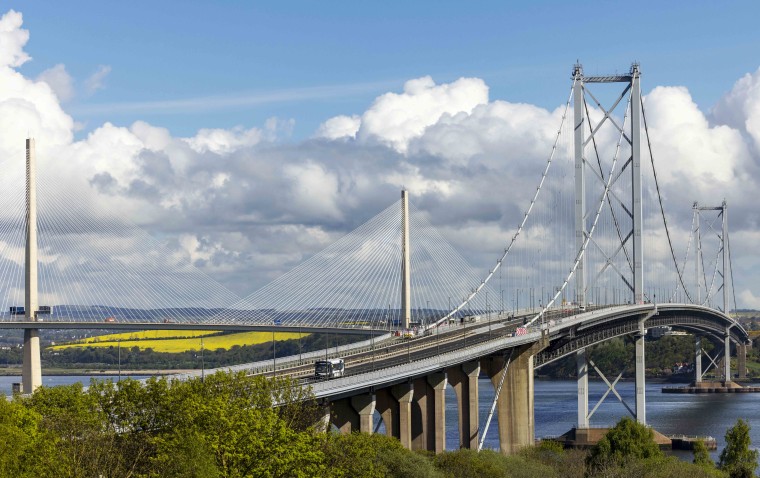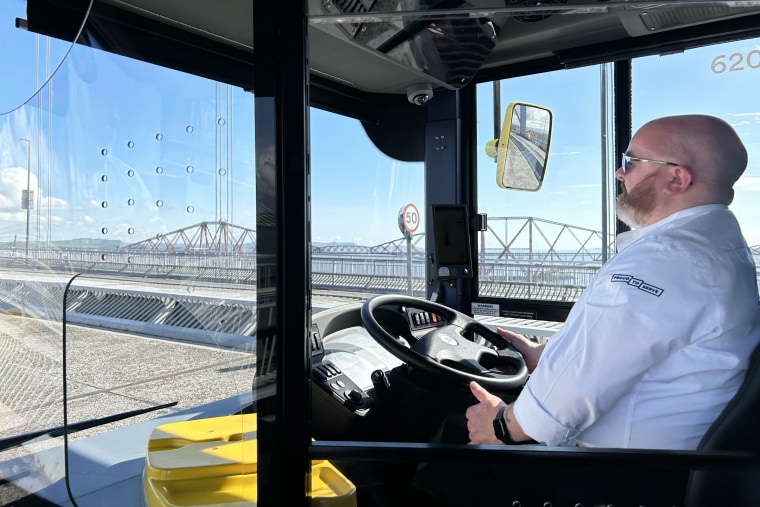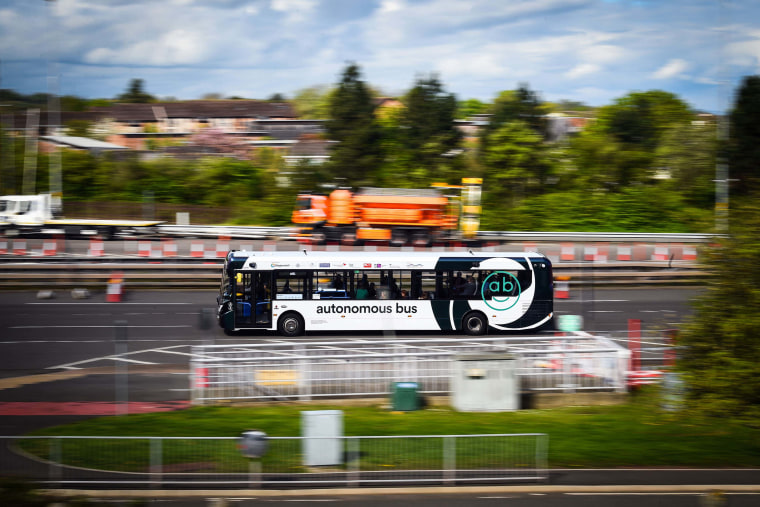EDINBURGH, Scotland — Organizers are calling it a first for autonomous transportation: computer-driven buses operating on a real route with real passengers navigating through real traffic.
But don’t call Edinburgh’s new autonomous buses, which began their service Tuesday, “driverless.” They’re staffed by not just one but two transport employees — twice the number required for a conventional bus in Scotland’s bustling capital.
It’s why this bold step toward the future of public transportation remains very much an experiment — a yearslong trial aimed as much at assuaging the public as testing new technology.
“When the technology is completely signed off and we’re allowed to take the driver out of the cab, he’ll be able to move around the saloon, engage with passengers, check tickets, keep the service successful, that kind of thing,” said Steven Russell, 34, an innovation manager for Stagecoach Scotland, one of Britain’s largest bus operators. The company outfitted the fleet of five Alexander Dennis Enviro200AV vehicles with autonomous driver technology.
But until then, passengers could be forgiven for regarding Scotland’s autonomous buses as little more than an impractical gimmick.

At a demonstration last week, the bus operator drove the bus as usual until he reached a predetermined point on Edinburgh’s Forth Road Bridge. A light “ding” alerted passengers that the driver, Steven Matthew, had switched on the autopilot.
That’s when he gingerly allowed his hands to levitate above the steering wheel — still poised at the ready to seize control of the bus from its computerized driver in case of an incident.
From a few feet away, Matthew still looked like he was driving the bus. Only a closer look made it clear his arms weren’t moving along with the steering wheel.
“The technology, I think, is brilliant,” said Matthew, 47, an operations supervisor. “It stays in the lane. It brakes when it senses other traffic. The only thing you’ve maybe got to worry about is other motorists’ not knowing what they’re going to do.”
Even if Matthew has complete trust in the technology, as the bus hurtled across the enormous bridge at 50 mph, his abiding presence behind the wheel was reassuring. This bus may need a Matthew not to protect humans from flaws in the technology but to backstop the technology against the flaws of human drivers and pedestrians, experts say.

“The biggest barrier with autonomous vehicles is dealing with people, especially in an urban environment, where people are making decisions on their own,” said Ram Murthy, 48, a professor in the School of Informatics at the University of Edinburgh who wasn’t directly involved in the bus project.
Human drivers always “stretch the rules just a little bit so that they can get by and collaborate with each other,” he said. If roads had only autonomous vehicles, the tech would operate almost perfectly, and motor vehicle accidents and deaths would plummet, he added.
But even if human foibles contribute to technological errors, there is reason for public suspicion.
Last year, the U.S. National Highway Traffic Safety Administration reported “nearly 400 crashes over a 10-month period involving vehicles with partially automated driver-assist systems, including 273 with Teslas,” according to The Associated Press.
The NHTSA cautioned that such figures shouldn’t be used to compare the safety of different automakers, because the data doesn’t “weight them by the number of vehicles from each manufacturer that use the systems, or how many miles those vehicles traveled.”
And regulators pushed Tesla this year to recall more than 363,000 cars equipped with its “full self-driving system” because the system didn’t always adhere to traffic safety rules and could cause crashes. Tesla disputed the regulators’ decision, even if it went along with the recall.
Stagecoach officials and researchers from Fusion Processing, the company that innovated the CAVStar autonomous driving system, acknowledge that even if the bus route is real, the so-called CAVForth bus project is still just a trial. It is part of a project partly funded by the U.K. government’s Centre for Connected and Autonomous Vehicles, which also involves local transport authorities and a pair of universities.

Organizers hope the technology will ultimately reduce human error, leading to decreases in roadway accidents and deaths. And by decreasing the need for human drivers, organizers hope to reduce costs, making bus systems more accessible to smaller towns and cities that can’t afford to offer public transportation.
Each bus bristles with 20 sensors, cameras and radar systems, along with a sophisticated satellite-linked global positioning system.
Every 30 minutes, a bus will traverse a 14-mile route that Fusion says includes “a range of complex traffic manoeuvres such as roundabouts, traffic lights, and ‘weaving’ motorway lane changes.”
Jim Hutchinson, Fusion’s CEO, said wary passengers should remember the computer’s advantages over human drivers: The autonomous driver doesn’t have to check blind spots, nor does it get distracted. The sensors never blink.
Fusion and Stagecoach officials say that while the service is still experimental, the buses have hit the road only after extensive testing: They have endured 10 years of research and development and over 1.1 million miles in tests.
If the trial works, organizers hope to roll out similar technology to four other cities across the U.K., perhaps before the end of the year. The companies and government agencies behind the project hope wider adoption could spur the kind of regulatory and legal changes that might eventually realize a truly “driverless” bus route.
“We still understand that we need to ensure that, you know, the public come with us on this,” Hutchinson said. “So I think there’s still work to be done on that side of it. But you know, the technology is ready now.”
